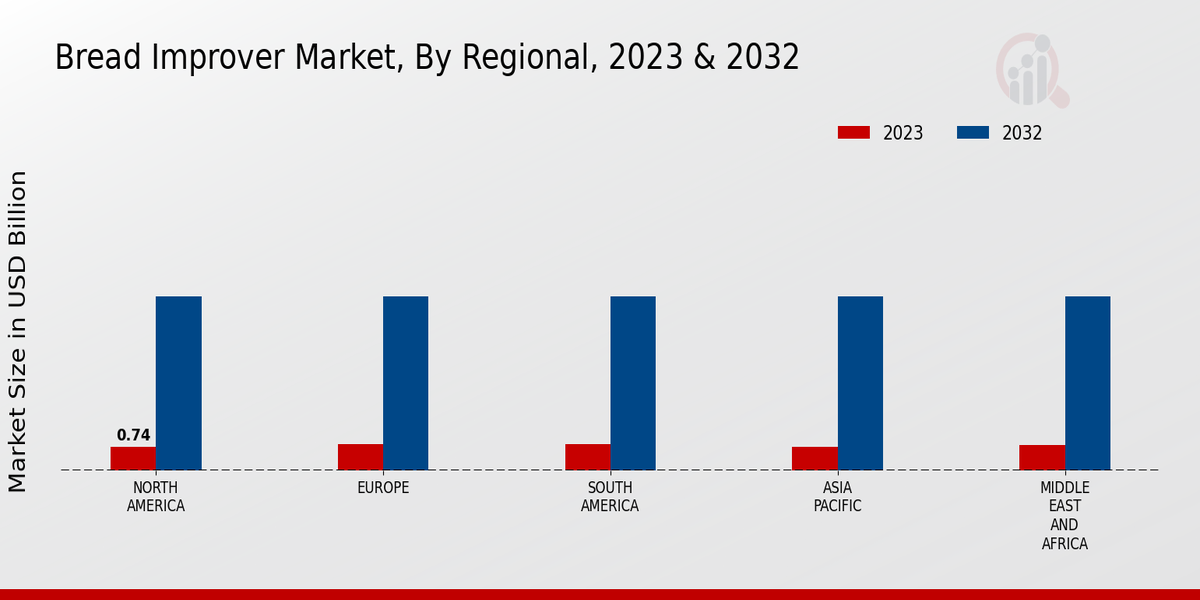Market Growth Projections
The Global Bread Improver Market Industry is projected to experience steady growth over the coming years. With a compound annual growth rate (CAGR) of 3.66% anticipated from 2025 to 2035, the market is expected to expand significantly. By 2035, the market value is estimated to reach 5200 USD Million, reflecting the increasing demand for high-quality bread products. This growth is driven by various factors, including health trends, technological advancements, and changing consumer preferences. As the market evolves, manufacturers are likely to invest in research and development to create innovative bread improvers that cater to diverse consumer needs, further propelling the industry forward.
Health and Wellness Trends
The Global Bread Improver Market Industry is significantly influenced by the rising health and wellness trends among consumers. There is an increasing awareness regarding the nutritional content of food products, leading to a demand for healthier bread options. Ingredients such as whole grains, seeds, and natural additives are gaining traction, as consumers seek products that align with their health goals. This shift is prompting manufacturers to innovate and reformulate their bread products, incorporating bread improvers that enhance nutritional value without compromising taste. As a result, the market is expected to grow steadily, with projections indicating a potential increase to 5200 USD Million by 2035, driven by health-conscious consumers.
Rising Demand for Convenience Foods
The Global Bread Improver Market Industry experiences a notable surge in demand for convenience foods, driven by changing consumer lifestyles. As urbanization accelerates, consumers increasingly seek ready-to-eat and easy-to-prepare food options. This trend is particularly evident in regions with busy urban centers, where time constraints influence purchasing decisions. Bread improvers enhance the quality and shelf-life of bread products, making them more appealing to consumers. The market is projected to reach 3500 USD Million in 2024, reflecting the growing inclination towards convenience in food consumption. This demand is likely to propel the Global Bread Improver Market Industry forward, as manufacturers adapt to meet evolving consumer preferences.
Technological Advancements in Baking
Technological advancements in baking processes are reshaping the Global Bread Improver Market Industry. Innovations in production techniques and equipment have enabled bakers to achieve consistent quality and efficiency in bread production. Automated systems and precision baking technologies allow for better control over fermentation and dough development, which are critical factors in bread quality. As these technologies become more accessible, smaller bakeries are also adopting them, leading to a broader market reach. This trend not only enhances product quality but also reduces production costs, making it a key driver for market growth. The integration of advanced baking technologies is likely to sustain the Global Bread Improver Market Industry's expansion.
Expansion of Retail and E-commerce Channels
The Global Bread Improver Market Industry is benefiting from the expansion of retail and e-commerce channels. As consumers increasingly turn to online shopping for their grocery needs, the availability of bread products has expanded significantly. E-commerce platforms provide consumers with access to a wider variety of bread options, including those enhanced with bread improvers. This shift in purchasing behavior is encouraging manufacturers to strengthen their online presence and optimize distribution strategies. The convenience of online shopping, coupled with the growing demand for quality bread products, is likely to drive market growth. This trend aligns with the overall trajectory of the Global Bread Improver Market Industry, indicating a promising future.
Consumer Preference for Artisan and Specialty Breads
The Global Bread Improver Market Industry is witnessing a shift in consumer preference towards artisan and specialty breads. As consumers become more discerning about their food choices, there is a growing appreciation for unique flavors, textures, and artisanal production methods. Bread improvers play a crucial role in enhancing the quality and characteristics of these specialty breads, allowing bakers to experiment with diverse ingredients and techniques. This trend is particularly pronounced in urban areas, where consumers are willing to pay a premium for high-quality, artisanal products. The increasing popularity of specialty breads is likely to contribute to the sustained growth of the Global Bread Improver Market Industry.















Leave a Comment